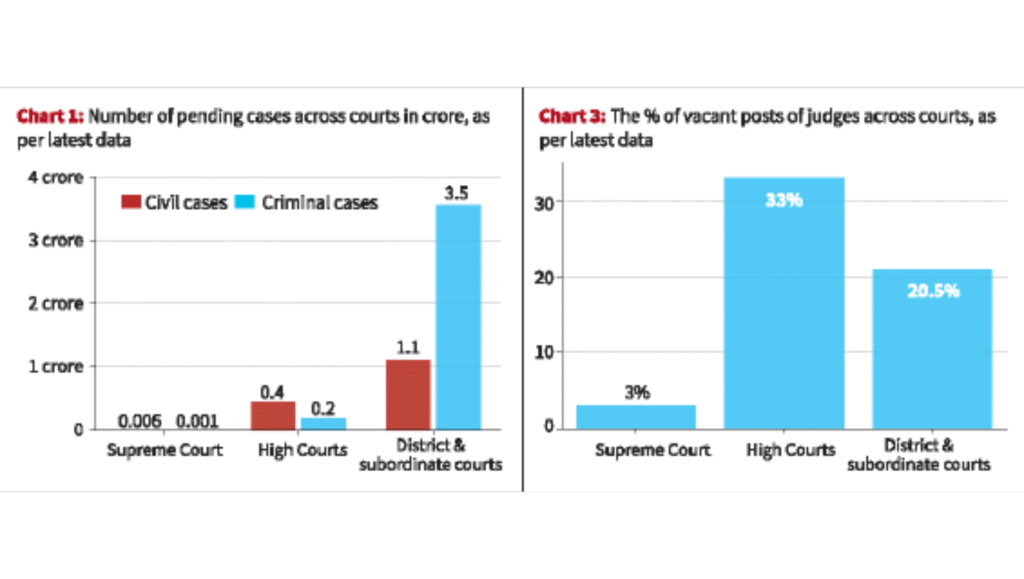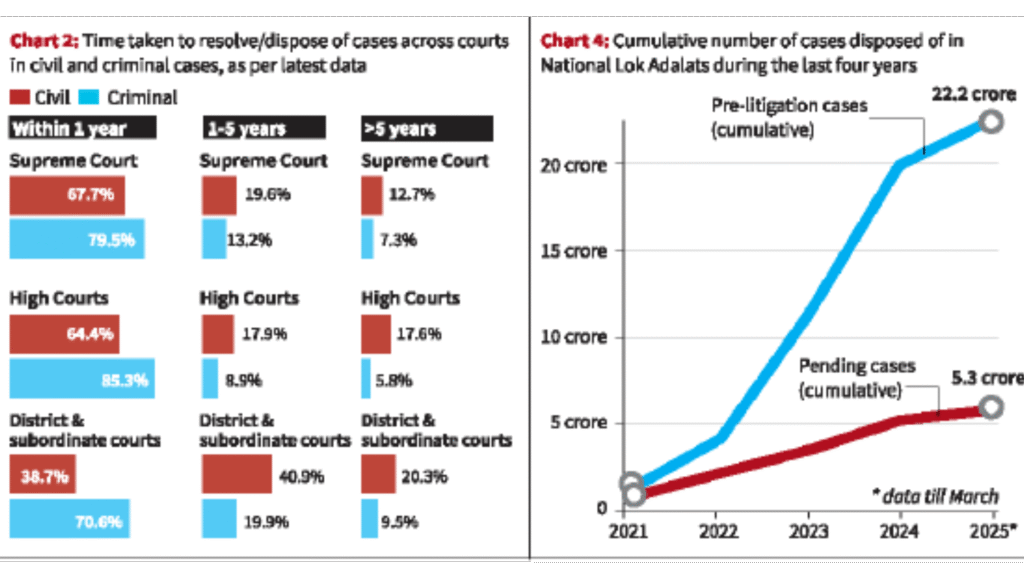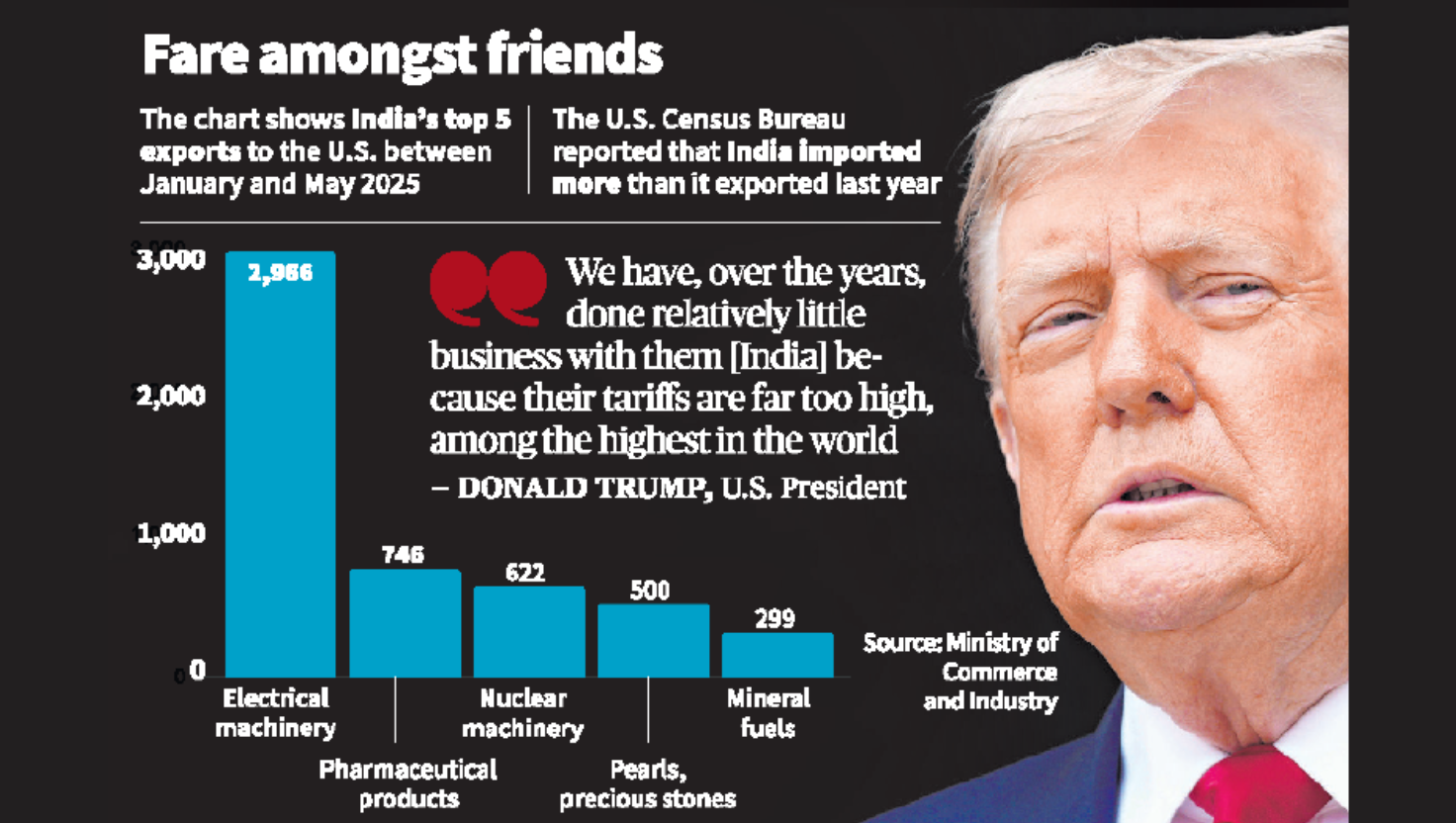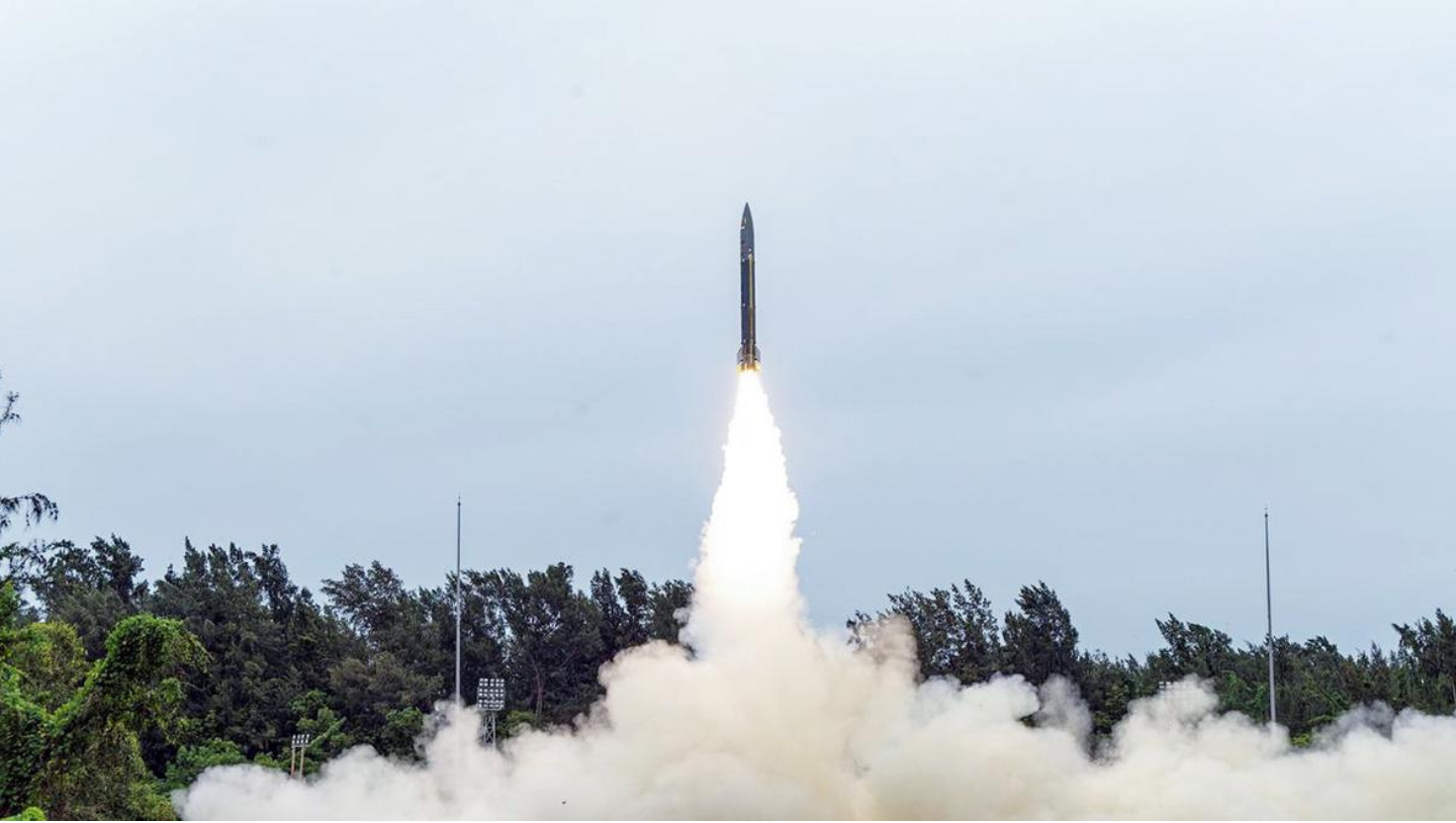Judicial Backlog in India: A Growing Concern
Syllabus: Polity and Governance (Judiciary) (UPSC GS II)
Source: The Hindu
Context:
India’s judiciary is burdened with over 5 crore pending cases across various levels. This has raised serious concerns about the right to timely justice. The President of India once referred to this issue as “Black Coat Syndrome”, highlighting the growing public distrust due to judicial delays.
Current Status of Pendency:
- Total Pending Cases:
- District Courts: 4.6 crore
- High Courts: 63.3 lakh
- Supreme Court: 86,700
- Judge-to-Population Ratio:
- Only 15 judges per 10 lakh people, compared to the Law Commission’s 1987 recommendation of 50.
- Case Disposal Trends:
- Criminal cases are disposed of faster (70.6% within a year) than civil cases (only 38.7%).
- Around 20% of civil cases in district courts stretch beyond 5 years.


Root Causes of Case Pendency:
1. Shortage of Judges:
- India operates at only 79% of its sanctioned judicial capacity.
- 5,665 posts remain vacant out of 26,927.
2. Delay in Civil Justice:
- Civil cases like property disputes and family matters take significantly longer to resolve.
3. Absence of Procedural Timelines:
- No fixed deadlines for filing, hearings, or examination.
- Frequent adjournments and poor case management add to delays.
4. Weak Infrastructure and Support Staff:
- Inadequate number of courtrooms, clerks, and IT tools.
- High burden on judges at the subordinate level.
Recent Government Measures:
1. e-Courts Project:
- 18,735 courts digitised with 99.4% WAN coverage.
- Video conferencing links in 3,240 courts and jails.
- Phase-III (₹7,210 crore): Targets a paperless, unified digital judiciary.
2. Infrastructure Development:
- Court halls increased from 15,818 (2014) to 23,020 (2024).
- ₹11,167 crore invested in judicial infrastructure.
3. Appointments and Judge Strength:
- 976 High Court and 62 Supreme Court judges appointed since 2014.
- District judiciary strength now at 25,609.
4. Fast-Track & Special Courts:
- 866 Fast Track Courts (FTCs) and 755 POCSO Courts operational.
- 2.53 lakh sensitive cases disposed of.
5. Alternative Dispute Resolution (ADR):
- Lok Adalats: Resolved 27.5 crore cases since 2021.
- Mediation Act, 2023: Promotes pre-litigation mediation.
- Arbitration laws: Set strict timelines for commercial disputes.
6. Legal Aid and Awareness:
- 90 lakh beneficiaries reached through Tele-Law.
- 11,000 pro bono lawyers under Nyaya Bandhu.
- Legal clubs established in 89 law schools.
Reforms Needed: The Way Forward
1. Strengthen Judicial Capacity:
- Increase judge strength to meet population needs.
- Fast-track appointments and reform the collegium system with transparent timelines.
2. Leverage Technology for Justice Delivery:
- Expand e-courts, AI tools, and automated scheduling.
- Implement the FASTER system for real-time order transmission.
3. Promote Alternative Dispute Resolution (ADR):
- Make pre-litigation mediation mandatory for civil disputes.
- Create a national pool of trained mediators and arbitrators.
4. Establish Specialised Benches:
- Set up courts focused on environment, taxation, IPR, and cyber law to enhance expertise and efficiency.
5. Improve Access to Justice:
- Expand legal aid through mobile courts and vernacular judgments.
- Promote legal awareness via school curricula and public outreach.
Conclusion:
The massive pendency in Indian courts reflects a deep-rooted systemic challenge that affects public faith in the justice system. However, with a multi-pronged approach—including judicial reforms, technological integration, ADR promotion, and improved infrastructure—India can move closer to delivering timely, affordable, and accessible justice as envisioned under the Constitution.











